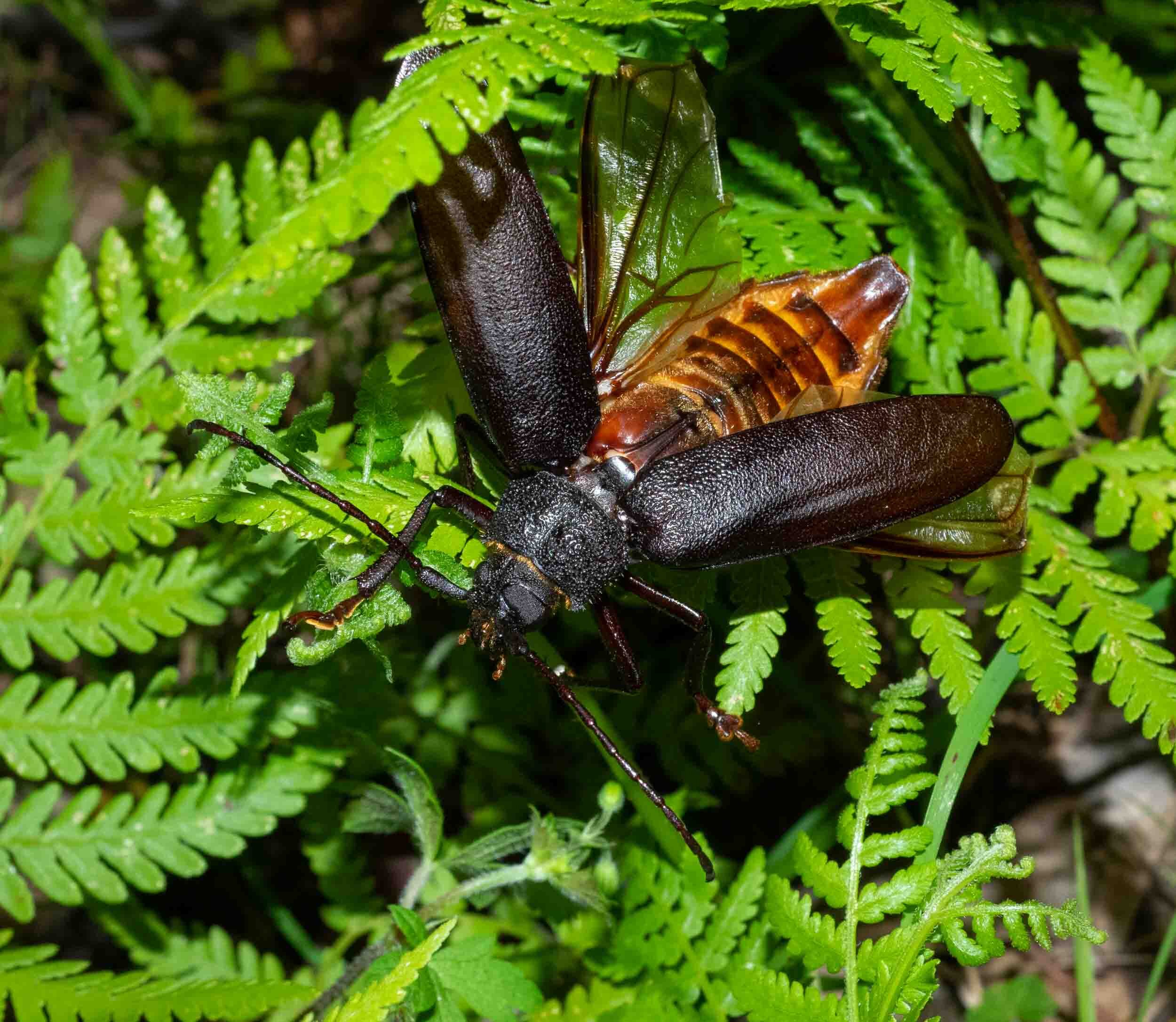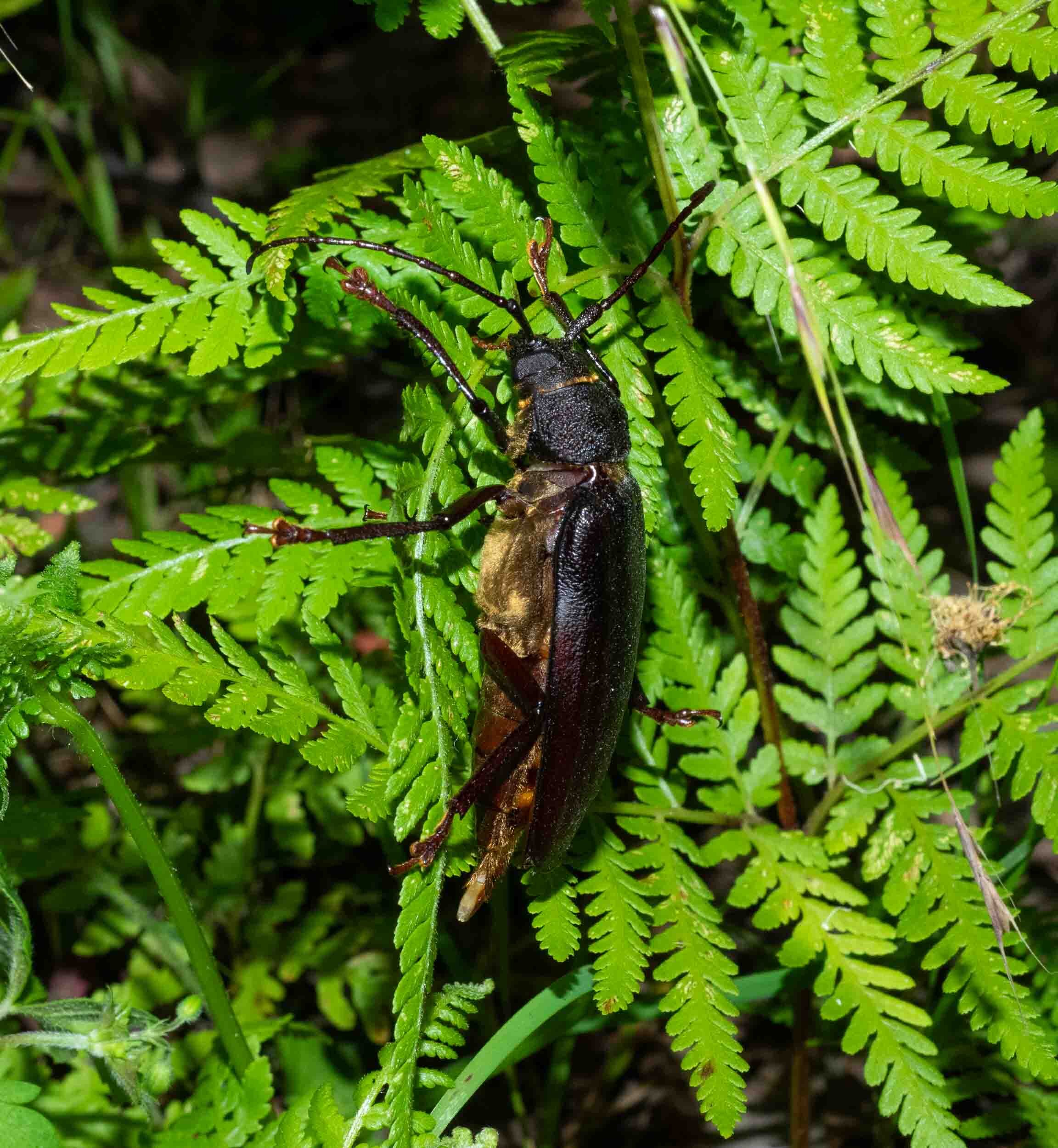Beetlemania

I missed out on the Beatlemania of 1963, but this is better! These beetles number way more than the Fab Four, and there are no screaming fans. Just moonless nights, a bright light, Paul and me … and the insects. And as Paul only has eyes for moths, I’m left to pursue the beetles.
Seriously though, beetles have rather stolen the show this week. One species in particular … Cnemoplites australis. They are big, they are nocturnal – and they were drawn to our moth light sheet in numbers. In the silence of mid night I tracked them by the ‘critch-critch’ sound as they scratched their way through the leaf litter. They seemed in a hurry to be somewhere and we ducked each time we heard the noisy whirring of incoming beetles in flight. It really was quite an experience.
We had never seen this species before. Clearly a longhorn beetle (family Cerambycidae) … but beyond that I needed to do some checking. So having collected a few for a closer look, and clearly establishing that I had both male and female …
… I settled in for a couple of days research. Luckily for me, a complete review of the Australian members of this family was published last year (ref. 1). I can now confidently identify them as Cnemoplites australis, (subfamily Prioninae, tribe Macrotomini)
As impressive as these beetles are, they have local cousins that are much larger … males of 60 or 70mm in length, and with more prominent jaws.
Prionine larvae live their lives in concealed tunnels, feeding on dead or damaged wood – for three years or more! Once they emerge as adults they have only days left to live. They spend that time seeking mates by sending and receiving chemical cues, then laying eggs in the cracks and crevices of trees. They don’t feed at all … those impressive jaws are used to cut their way out of their pupal cases and perhaps by egg-laying females to peel back tree bark.
I now realise that we uncovered a prionine grub a few months back … and there’s good reason to think it was Cnemoplites australis! It’s an exact match for published images of the genus (ref. 2), and C. australis is probably the only Cnemoplites we’d expect in our region.
In early October Paul was splitting rounds from the tree that fell and crushed our water tank during the fire nine months earlier. Given the size of the grub and their long life span, I assume it had been feeding on the tree long before it fell. So we now know that live Stringybark trees (Eucalyptus globoidea) can play host to these large beetles. Although the grub had created large tunnels in the wood, it is unlikely to be the primary cause of the tree’s demise. Fungi and termites will have played a part, fire and wind did the rest.
References
Jin, M., de Keyzer, R., Hutchinson, P., Pang, H. & Ślipiński, A. 2020. A review of the Australian Macrotomini (Coleoptera: Cerambycidae: Prioninae). Annales Zoologici (Warszawa), 70(1): 33-96
Ślipiński, A. & Escalona, H.E. 2013. Australian Longhorn Beetles (Coleoptera: Cerambycidae). Volume 1: Introduction and subfamily Lamiinae. CSIRO Publishing, Collingwood.















